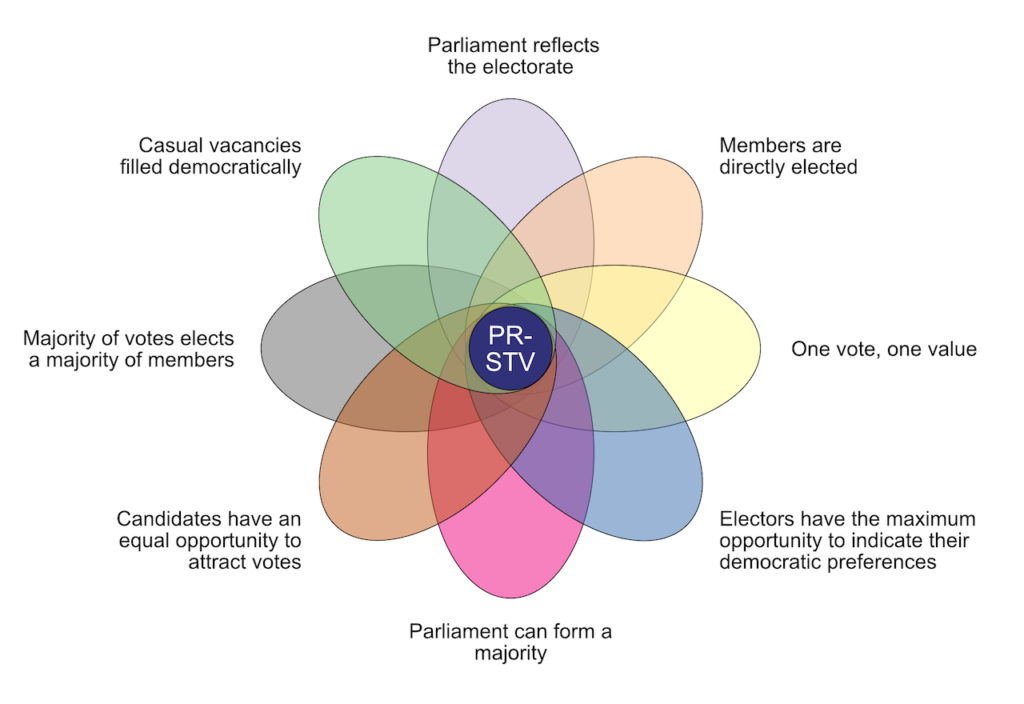PR-STV is the Single Transferable Vote (STV) form of Proportional Representation (PR).
A key benefit of PR-STV is that all representatives are directly elected by the people, unlike party-list or Mixed Member Proportional (MMP) systems. With PR-STV, each voter has a single vote, and voters mark their preferences on the ballot paper by placing sequential numbers next to the names of candidates.

Every bicameral Australian parliament now has a house with a PR-STV electoral system:
- Australia’s Senate (which is the largest scale use of PR-STV in the world)
- Victoria’s Legislative Council
- Tasmania’s Legislative Assembly
- ACT’s Legislative Assembly
PR-STV is also used for Victoria’s Local Councils, the lower houses of Eire and Malta, the elections by State legislators for the upper house of India entrenched in Article 80(4) of the Constitution of India, and only one remaining U.S. municipality, Cambridge, Massachusetts.
Enhancements to PR-STV
Countback and Robson Rotation are features which greatly enhance PR-STV, and combine to form the Hare-Clark PR-STV system, used in Tasmania and the Australian Capital Territory for the elections of their legislatures and municipal councillors.
Further information
A good background to the use of PR-STV (quota-preferential PR) is the history page on the PRSA website.
